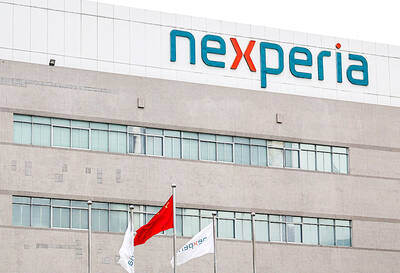South Korea’s trade deficit in kimchi, its proud traditional side dish of fermented cabbage, reached an all-time high last year as low-priced Chinese imports flooded the market, statistics showed yesterday.
The spicy foodstuff is emblematic of Korean cuisine and accompanies almost every meal served in the nation, whatever its culinary origins, with kimchi-making still an important annual ritual for many families.
However, the commercial market has been deluged by Chinese producers in recent years, resulting in what has been dubbed the “kimchi deficit.”

Photo: AP
South Korea imported more than 275,000 tonnes of kimchi last year, 99 percent of it from China, the Korea Customs Service (KCS) said, and exported just more than 24,000 tonnes.
The deficit stood at US$47.3 million by value, up 11 percent year-on-year and the largest since the KCS began tracking the data in 2000.
Price is a major factor in the trade, with imports costing just US$0.50 per kilogram in 2016, according to Korea Agro-Fisheries & Food Trade Corp, while exports — primarily destined for Japan — averaged US$3.36 per kilogram.
According to South Korea’s World Institute of Kimchi, 89.9 percent of the kimchi purchased by South Korean restaurants in 2016 was imported from China.
The kimchi trade first went into deficit in 2006, triggering soul-searching and a headline-grabbing scandal.
UNESCO inscribed South Korean kimchi on its intangible cultural heritage list in 2013, saying: “It forms an essential part of Korean meals, transcending class and regional differences.”
There are regional differences in the product, UNESCO said, and the specific methods and ingredients are considered an important family heritage, typically transmitted from a mother-in-law to her newly married daughter-in-law.

JITTERS: Nexperia has a 20 percent market share for chips powering simpler features such as window controls, and changing supply chains could take years European carmakers are looking into ways to scratch components made with parts from China, spooked by deepening geopolitical spats playing out through chipmaker Nexperia BV and Beijing’s export controls on rare earths. To protect operations from trade ructions, several automakers are pushing major suppliers to find permanent alternatives to Chinese semiconductors, people familiar with the matter said. The industry is considering broader changes to its supply chain to adapt to shifting geopolitics, Europe’s main suppliers lobby CLEPA head Matthias Zink said. “We had some indications already — questions like: ‘How can you supply me without this dependency on China?’” Zink, who also

The number of Taiwanese working in the US rose to a record high of 137,000 last year, driven largely by Taiwan Semiconductor Manufacturing Co’s (TSMC, 台積電) rapid overseas expansion, according to government data released yesterday. A total of 666,000 Taiwanese nationals were employed abroad last year, an increase of 45,000 from 2023 and the highest level since the COVID-19 pandemic, data from the Directorate-General of Budget, Accounting and Statistics (DGBAS) showed. Overseas employment had steadily increased between 2009 and 2019, peaking at 739,000, before plunging to 319,000 in 2021 amid US-China trade tensions, global supply chain shifts, reshoring by Taiwanese companies and

Taiwan Semiconductor Manufacturing Co (TSMC, 台積電) received about NT$147 billion (US$4.71 billion) in subsidies from the US, Japanese, German and Chinese governments over the past two years for its global expansion. Financial data compiled by the world’s largest contract chipmaker showed the company secured NT$4.77 billion in subsidies from the governments in the third quarter, bringing the total for the first three quarters of the year to about NT$71.9 billion. Along with the NT$75.16 billion in financial aid TSMC received last year, the chipmaker obtained NT$147 billion in subsidies in almost two years, the data showed. The subsidies received by its subsidiaries —

Shiina Ito has had fewer Chinese customers at her Tokyo jewelry shop since Beijing issued a travel warning in the wake of a diplomatic spat, but she said she was not concerned. A souring of Tokyo-Beijing relations this month, following remarks by Japanese Prime Minister Sanae Takaichi about Taiwan, has fueled concerns about the impact on the ritzy boutiques, noodle joints and hotels where holidaymakers spend their cash. However, businesses in Tokyo largely shrugged off any anxiety. “Since there are fewer Chinese customers, it’s become a bit easier for Japanese shoppers to visit, so our sales haven’t really dropped,” Ito